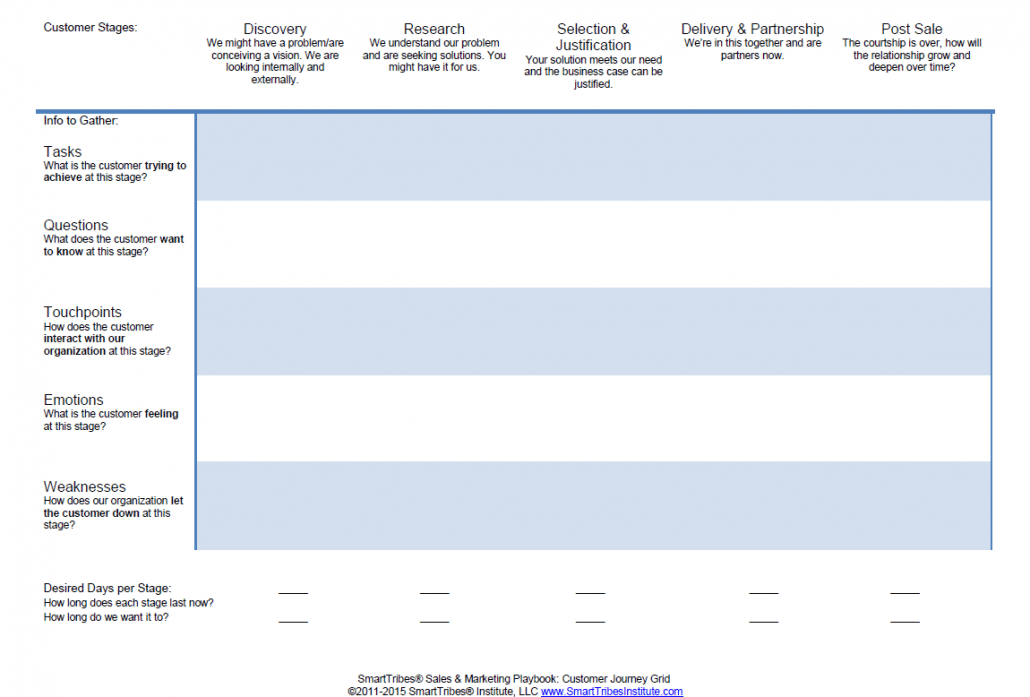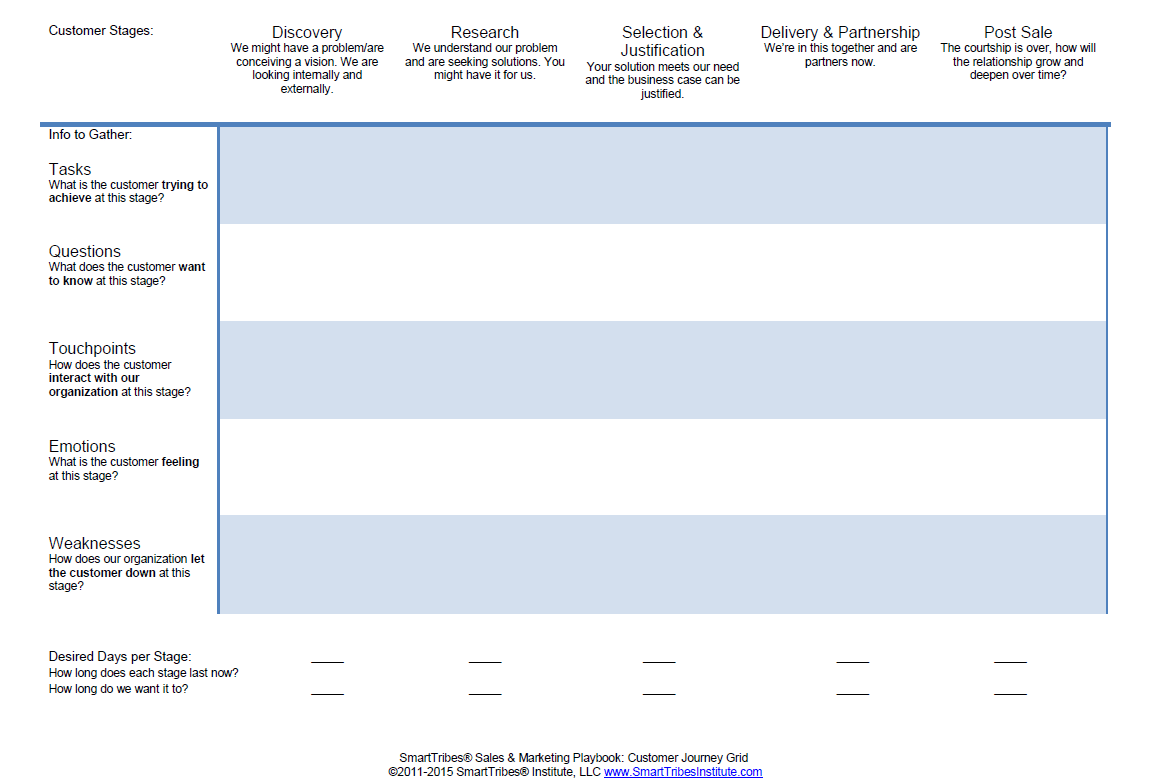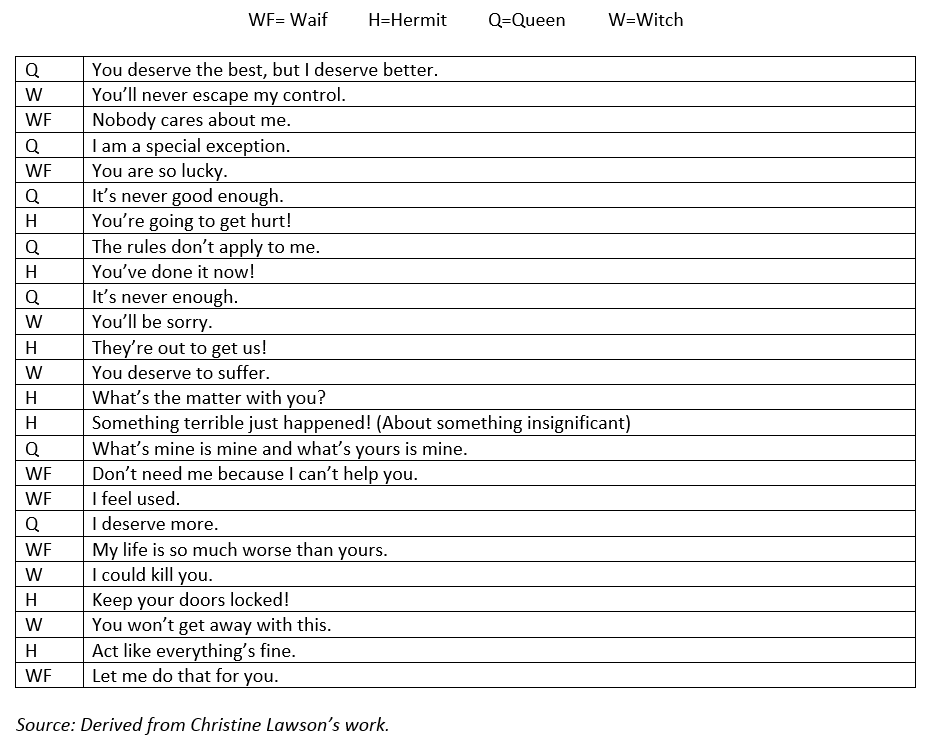
*As originally seen on Forbes.com

Sometimes I run across a tool that’s just too good not to share. This is one of them.
I have taken hundreds of my clients and their teams through an exercise called the “Customer Journey.” It’s a powerful process and clearly illuminates what’s missing in sales and marketing messages. Thanks goes to Paul Boag for the clear layout above.
Me-Centric Marketing
Here’s the essential difference. Often, when we think about marketing our focus is on ourselves. How much can we sell? What is our target market? Who is our ideal client? Even when we describe customer needs we are often seeing customers through our own eyes and filters.
The Customer Journey process walks us through our customers’ experience and asks questions that force us to see ourselves through a different lens. Through their lens.
And the structure of the process means you can’t “lead the witness” either.
Your first step is to determine your basic customer personas, for example: corporate executives, IT managers, purchasing managers. Then either cover a huge wall with paper, or project a template from a pc and type in the results together.
How you divide up the work depends on how large your group is. However, please don’t assign any chunk of the work to just one person. The point is to work collaboratively. So ideally you have diverse teams work through the entire grid for one customer profile or a section of a profile.
You-Centric Marketing
Across the top of your customer journey grid (the column headers of the grid) will be the stages a customer moves through as they select a new partnership/vendor:
- Discovery: This is where your customer first becomes conscious that they have a problem/need. They are beginning to look both internally and externally for ways to achieve their vision. This is where they’ll “discover” you, so be sure you are visible! Some marketers call this the Awareness stage.
- Research: Here the potential customer understands their problem/need and is seeking information about you, your competitors and possible solutions. You’ll want to make sure your info is easy to find.
- Selection and Justification: At this stage the potential customer feels that your solution meets their need and the solution can be justified. They’re selecting you. Hooray!
- Delivery and Partnership: Now you and your customer are in it together, you are partners. It’s time to deliver on your promises and work through any challenges together.
- Post Sale: The courtship is over, how will the relationship grow and deepen over time?
On the left side of the grid (the rows of the grid) we have the info we want to understand at each stage. They are:
- Tasks: What is the customer trying to achieve at this stage?
- Questions: What does the customer want to know at this stage?
- Touchpoints: How does the customer interact with our organization at this stage?
- Emotions: What is the customer feeling at this stage?
- Weaknesses: How does our organization let the customer down at this stage?
I also have my clients track at the bottom of the grid how long customers typically spend at each stage and compare it to what they would like to have happen. From here we can uncover where prospects get “stuck” and then create neuroscience-based marketing messages to help them regain/keep momentum.
Tricks Of The Trade
I have found that answers tend to move around a bit so if you’re putting things on a wall, you’ll want to fill in the grid with post-its so that you can move them.
Use a neutral third party to facilitate and maintain momentum. They will see things and ask questions that you can’t possibly think to ask. You’re too close.
Once the grid is filled in, it is crucially important to validate the findings. Again, use a neutral third party to have calls with your customer personas—these take about 30-45 minutes and you’ll want to send the completed Journey to them in advance. And be sure to reposition the “Weaknesses” section—we edit it to say “Opportunities” for how we can serve customers even better before we send to the customer for validation.
Make sure to schedule a follow-up meeting where your sales and marketing plan will be reviewed relative to the validated findings. Things will change for sure!
The Case Of The Tragic Sales Force
One of my clients brought me in because they just couldn’t understand what was happening. They had been working continuously on their culture and the team had become a true SmartTribe.
Yet sales continued to languish.
The team began by defining each profile clearly and applied Meta-programs to flesh out the profile definitions and deepen our understanding of the different customer types. They then walked through the “Customer Journey Grid,” discussing each profile at each stage and getting more and more honest about what the customer was experiencing and where they were letting them down.
After validating their findings by talking with their customers, they met and made several major changes to their marketing message and sales process. The findings even eventually affected how they deliver and how they follow up. And for the first time ever, sales and marketing are aligned with the customer’s true experience.
And the best news? Now sales are zooming due to deeply connecting with their customer. My client is now consistently hitting their Targets and sometimes even their Mind Blowers.
I’d love to see you achieve this too!
See the Customer Journey as a storytelling tool. The better we can understand the customer’s experience, the better we can serve them on their journey
*Interested in diving deep into the brain-based tools you need to deeply connect with prospects and customers, forge trust quickly and expedite the sales process for producing phenomenal results? Join us on April 12-14 for our E-learning series. Double Your Sales & Crush Your Competition: Using Neuroscience to Sell Better, Market Better, Close Faster!






